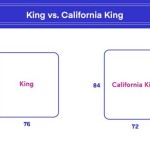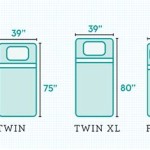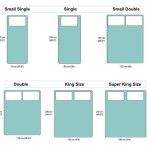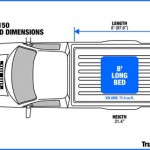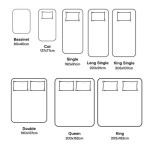Bed Bug Photo: Understanding Actual Size and Identification
Bed bugs are nocturnal parasitic insects that feed on human blood, typically while people are sleeping. Understanding their appearance, particularly their actual size, is crucial for early detection and effective control. This article provides a comprehensive overview of bed bug size, appearance at different life stages, and methods for accurate identification. Accurate identification can prevent misdiagnosis and ensure that appropriate pest control measures are employed.
A common misconception is that bed bugs are too small to be seen. While young nymphs can be quite tiny, adult bed bugs are generally visible to the naked eye. Knowing the precise size range and considering factors that influence their size, such as feeding, is essential for accurate identification. This knowledge empowers individuals to identify potential infestations early, minimizing the impact and spread of these pests.
Key Point 1: Bed Bug Size Across Life Stages
Bed bugs undergo incomplete metamorphosis, progressing through five nymphal stages before reaching adulthood. Each stage is characterized by a molt and a subsequent blood meal required for growth. Consequently, the size of a bed bug varies significantly depending on its life stage and recent feeding activity.
Eggs: Bed bug eggs are approximately 1mm in length, resembling small grains of rice. They are white or pearly white, often translucent, and are typically laid in clusters in crevices or on rough surfaces. Due to their small size and color, they can be difficult to detect without close inspection.
Nymphs: Nymphs are smaller versions of adult bed bugs, but they are translucent or pale in color before feeding. After a blood meal, their bodies become engorged and reddish-brown. The size of the nymphs increases with each stage:
First Instar: About 1.5 mm in length.
Second Instar: About 2 mm in length.
Third Instar: About 2.5 mm in length.
Fourth Instar: About 3 mm in length.
Fifth Instar: About 4.5 mm in length.
Adults: Adult bed bugs are typically 4-5 mm in length and 1.5-3 mm wide. They have a flattened, oval-shaped body. Their color ranges from reddish-brown to brown, becoming more engorged and darker after a blood meal. The size and shape of an adult bed bug is often compared to that of an apple seed.
The size variations across these life stages emphasize the importance of considering both size and appearance when identifying potential bed bugs. Focusing solely on the size of an adult bed bug may lead to overlooking younger nymphs, hindering early detection efforts.
Key Point 2: Factors Influencing Bed Bug Size and Appearance
Beyond the life stage, several factors influence the size and appearance of bed bugs. These factors include feeding status, species variations, and environmental conditions.
Feeding Status: A bed bug's size is significantly affected by whether it has recently fed. Unfed bed bugs are smaller and flatter, while engorged bed bugs are larger and more elongated. The color also changes after feeding, transitioning from a lighter brown to a darker reddish-brown. The engorgement makes them easier to spot due to their increased size and darker color.
Species Variations: While *Cimex lectularius* is the most common species of bed bug that infests human dwellings, other species exist. Although generally similar in appearance, slight size and color variations may occur between different species. These variations are typically minor but should be considered when comparing bed bugs to identification guides.
Environmental Conditions: Temperature and humidity can affect the growth rate and size of bed bugs. Optimal conditions, typically around 70-80°F (21-27°C), promote faster growth and reproduction. Unfavorable conditions, such as extreme heat or cold, can slow down their development and potentially affect their size. However, these environmental impacts are usually less significant than the effects of feeding status and life stage.
Starvation: When bed bugs are starved in a lab they often get smaller over time and can look almost translucent. These bed bugs are still an issue, but they should still be treated with as much awareness as other bed bugs.
These influencing factors indicate that identification should not solely rely on size. A comprehensive assessment, including shape, color, and signs of feeding, is necessary for accurate determination and appropriate action.
Key Point 3: Methods for Accurate Bed Bug Identification
Accurate identification of bed bugs requires a combination of visual inspection, knowledge of their habits, and, in some cases, professional assistance. Several methods can be employed to achieve accurate identification and confirm the presence of an infestation.
Visual Inspection: Thoroughly inspect areas where bed bugs are likely to hide, including mattresses, box springs, bed frames, headboards, and seams in furniture. Use a flashlight and magnifying glass to aid in the detection of bed bugs, their eggs, and fecal spots. Pay particular attention to cracks and crevices, as these provide ideal hiding places.
Sticky Traps: Place sticky traps around the legs of beds and furniture to capture bed bugs. These traps can help confirm the presence of bed bugs and provide an indication of the infestation level. Regular monitoring of the traps is crucial for early detection.
Professional Identification: When unsure, it is advisable to consult a pest control professional for accurate identification. Professionals have the expertise and tools to identify bed bugs and assess the extent of an infestation. They can also provide guidance on effective treatment options. Submitting a sample of a suspected bed bug to a local extension office or entomologist for identification is another alternative.
Look for other signs: Aside from spotting a live bed bug, other signs can include bites, blood spots on sheets, skins left behind from molting, and fecal matter. These are all indications of a bed bug infestation and can help lead to identifying and locating the parasitic insects.
Comparison to Known Images: Comparing suspected bed bugs to high-resolution photographs of bed bugs at different life stages and feeding statuses can also be helpful. Many reliable resources, including university extension websites and pest control company websites, provide detailed images and information on bed bug identification.
Successful bed bug management relies on early and accurate detection. Combining visual inspection with other identification methods and, if necessary, seeking professional assistance maximizes the chances of confirming an infestation and implementing effective control measures. This multi-faceted approach is essential for preventing the spread of bed bugs and mitigating their impact on human health and well-being.
Furthermore, understanding the limitations of solely relying on photographs is important. While photographs provide a visual reference, they may not accurately represent the size and appearance of bed bugs in all situations. Factors such as lighting, camera angle, and image resolution can affect the perceived size and color of the insect. Therefore, it is critical to use photographs as a guide in conjunction with other identification methods and knowledge of bed bug biology.
Regular monitoring and preventative measures, such as inspecting luggage after travel and encasing mattresses and box springs, can also help minimize the risk of bed bug infestations. These proactive steps, combined with accurate identification, are essential for maintaining a bed bug-free environment.
Finally, it is important to note that bed bug infestations can be emotionally distressing. Effective communication and support are essential for individuals and families dealing with bed bugs. Seeking information from reliable sources and consulting with professionals can help alleviate anxiety and ensure that appropriate steps are taken to address the infestation.

View Bed Bug Pictures In All Life Stages Zappbug

Bed Bug Size Comparison Are Bugs Visible To The Eye

View Bed Bug Pictures In All Life Stages Zappbug

Can You See Bedbugs Size Identification Removal Prevention

How To Identify And Deal With Bed Bugs Snowball Pest Control

Bed Bugs Pictures High Resolution Bug Images

Bed Bugs Pestrid S

Protect Yourself From Bed Bugs Announce University Of Nebraska Lincoln

What Do Bed Bugs Look Like Loadup

About Bed Bugs True Heat Solutions

